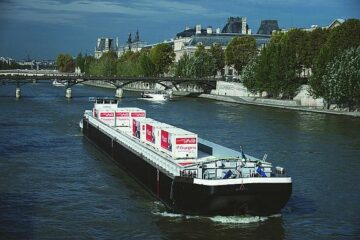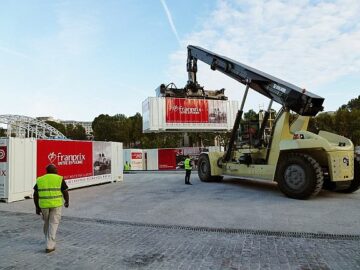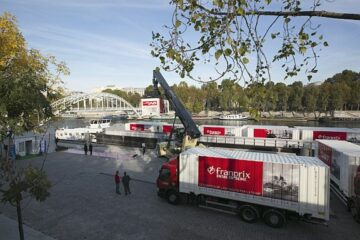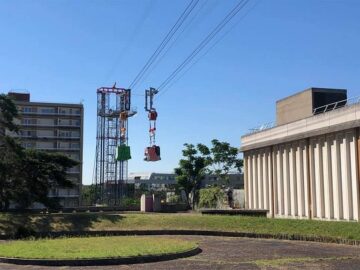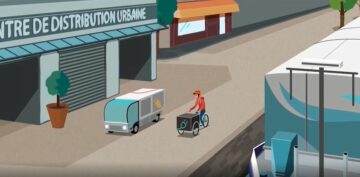Challenge(s)
Promoting smoother, low carbon port logistics.
Good practice
Use the waterway as a logistics tool for the urban distribution of goods
Urban pressure to create new housing units, services, etc. is always intense in urban ports. This increased urban presence also implies greater demand for goods and more intense use of roadways. Considering the typical congestion problems that affect cities' land transport networks, the option of using the waterways for goods distribution is becoming more and more attractive. However, for this alternative to become feasible, all stakeholders must agree on these new logistics strategies.
Cas d'étude
Since September 2012, the food products destined for Franprix stores located in the heart of Paris are being distributed via the Seine. The goods are first transported in containers between the port of Bonneuil-sur-Marne and the port of Bourdonnais in the centre of Paris, before being delivered by truck on the last leg of their itinerary to the retail stores, all of which are located within a radius of 4 km. Since 2015 a second warehouse located at Bonneuil is used allowing to increase to 42 per day the number of containers transported by the River Seine, and to 300 the number of stores being supplied. Long term, the objective is to transport 48 containers per day, which is equivalent to a savings of 450,000 km / year and a 37% reduction in CO² emissions. This initiative is also enabling development of the quays located within the urban area and will make port activities more acceptable to the Paris population.
River transportation is an excellent alternative for urban and last-mile logistics. In the case of Paris there several pioneering projects to use the Seine river as logistic channel. The project Fludis proposes a system combining 38 m long electric barges as floating warehouses with electric bicycles, capable of distributing 3000 packages per day, potentially saving up to 110 tons of CO2 per year.
Another case is the cable car developed by Citallios to transport 260 000 tons of dirt from a construction site in Clichy. This original system transports skips carrying 20 tons of land over 400m at 35m above ground, connecting the site with the barges. This solution will save 10 000 trucks per month and safe 35% CO2 emissions. Other solutions in Paris using barges, like Green Deliriver, use alternative fuels, like biogas, or combine different electric vehicles, such as Green Switch Meridian. These examples show the potential of rivers for sustainable mobility.
Franprix (+ video)

